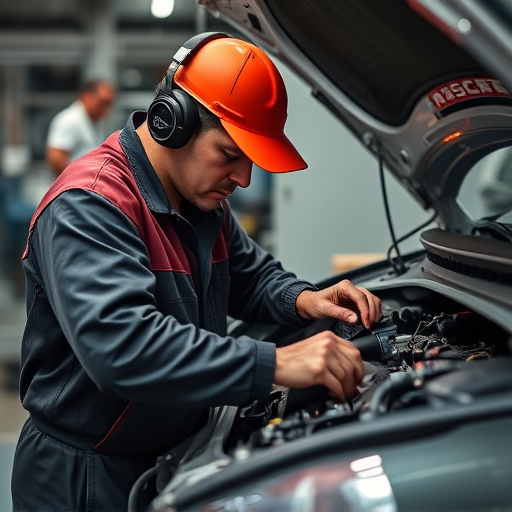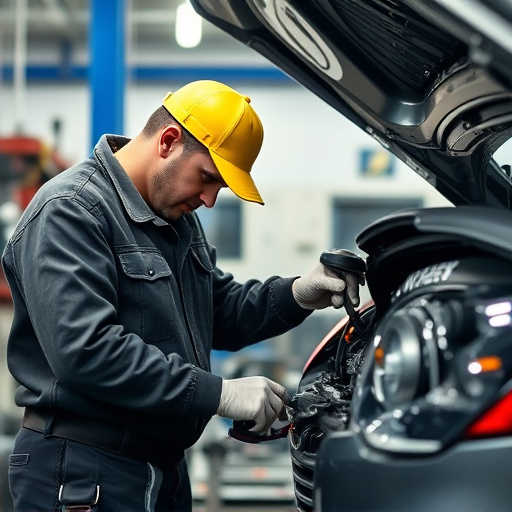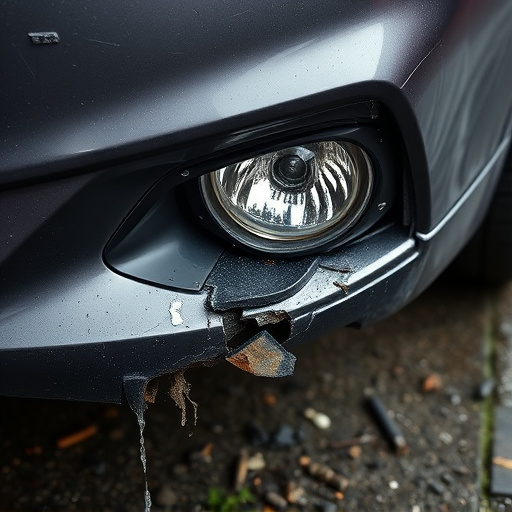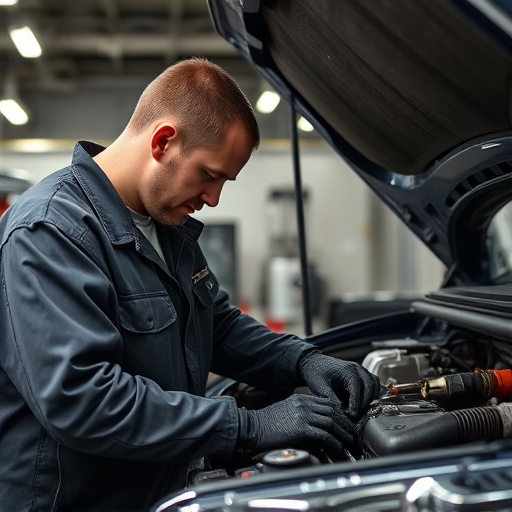Inspecting and Repairing Tesla Home Charger Damage After an Accident

After a car accident, thoroughly inspect your Tesla home charger for external and internal damage, i…….
In the rapidly evolving landscape of electric vehicle (EV) ownership, the Tesla home charger has emerged as a pivotal component, transforming how drivers recharge their vehicles at home. This article delves into the intricate world of Tesla home chargers post-accident, exploring their significance, global impact, technological innovations, and the challenges they face. By examining real-world applications and future trends, we aim to provide an in-depth understanding of this game-changing technology and its role in shaping sustainable transportation.
Definition: A Tesla home charger, specifically designed for residential use, is a device that enables owners of Tesla electric vehicles (EVs) to charge their cars at home, offering a convenient and efficient alternative to public charging stations. The term “after accident” refers to the scenario where these chargers are installed or upgraded following an incident, such as a car crash or a need for infrastructure upgrade.
Core Components:
Charging Station: This is the physical device installed at home, typically mounted on a wall or placed in a dedicated charging area. It includes a power supply, connectors, and communication modules for data transfer.
Power Supply Unit: Responsible for drawing electricity from the main grid and delivering it to the charger, often with advanced safety features to prevent overloading.
Connector: The interface that connects the charger to the EV, ensuring proper alignment for safe charging.
Communication Module: Enables data exchange between the charger, Tesla’s cloud system, and the vehicle, allowing for remote monitoring and control.
Historical Context: Tesla, led by its visionary CEO Elon Musk, has been at the forefront of promoting electric mobility. The company’s home charger program started as a way to address the growing demand for convenient EV charging solutions. Initially, Tesla offered basic models, but post-accidents or upgrades, these chargers evolved to incorporate advanced safety features, faster charging speeds, and smart connectivity.
Significance: Tesla home chargers play a crucial role in:
Fostering EV Adoption: By providing an accessible and convenient charging option at home, they encourage more individuals to make the switch to electric vehicles.
Reducing Range Anxiety: Home charging eliminates the worry of running out of battery during long trips, making EVs more viable for daily commutes and travel.
Enhancing Energy Efficiency: Installing these chargers allows for off-peak charging, leveraging cheaper electricity rates and reducing strain on the grid during peak hours.
The global impact of Tesla home chargers is profound, with their adoption accelerating across various regions due to growing environmental awareness and supportive government policies. Here’s an overview:
| Region | Market Dynamics | Key Trends | Influence on Local Economy |
|---|---|---|---|
| North America | High EV penetration rate, robust infrastructure | Increasing demand for Level 2 chargers at homes, retrofitting of existing homes | Job creation in manufacturing and installation, reduced reliance on fossil fuels |
| Europe | Stringent emissions regulations, government incentives | Growing popularity of smart charging solutions, integration with renewable energy sources | Boost to green energy sector, reduced carbon footprint |
| Asia-Pacific | Rapid EV market growth, increasing disposable income | Home charging as a standard feature in new housing developments | Driving local manufacturing and service industries |
| Middle East & Africa | Growing middle class, supportive government initiatives | Focus on fast charging networks for long-distance travel | Economic diversification through clean energy investments |
The economic landscape surrounding Tesla home chargers is complex, involving various market dynamics:
Market Demand: The global EV market’s growth has led to a corresponding surge in demand for home charging infrastructure. According to a 2022 report by Statista, the number of electric cars on the road worldwide is projected to reach 145 million by 2030, presenting a substantial market opportunity for Tesla chargers.
Investment Patterns: Governments and private investors are increasingly funding home charging infrastructure projects, recognizing their role in EV adoption and grid stability. For instance, countries like Norway, the global leader in EV penetration, offer tax incentives and subsidies for installing home chargers.
Economic Impact:
Tesla home chargers have witnessed remarkable technological progress, driving the EV revolution:
Fast Charging: Modern Tesla chargers support fast charging technologies like V3 (Vehicle 3) and Supercharging, enabling significant battery recharging in a short time, making long-distance travel more feasible.
Smart Connectivity: Integration of Internet of Things (IoT) technology allows for remote monitoring, control, and software updates, enhancing user experience and charger efficiency.
Energy Management: Advanced chargers can communicate with the EV and local grid to optimize charging during off-peak hours, reducing electricity costs and strain on the power network.
Autonomous Installation: Tesla’s recent advancements in autonomous driving are being applied to home charger installation, making it faster, safer, and more efficient.
Governments worldwide play a pivotal role in shaping the landscape of Tesla home chargers through various policies and regulations:
Incentives and Subsidies: Many countries offer financial incentives, grants, or tax breaks to encourage homeowners to install EV charging points, reducing upfront costs.
Building Codes: Local authorities often update building codes to mandate or facilitate the installation of home charging infrastructure in new constructions.
Grid Integration Rules: Regulators set guidelines for connecting charging stations to the grid, ensuring safe and efficient energy distribution.
Data Privacy Laws: As smart chargers collect data on energy usage, policies must be in place to protect user privacy and ensure secure data handling.
Despite their numerous benefits, Tesla home chargers face several challenges:
Initial Installation Costs: High upfront costs for purchasing and installing chargers can deter some homeowners, especially in regions with less supportive incentives.
Grid Congestion: Widespread adoption may strain local power grids, requiring strategic planning and infrastructure upgrades to handle increased electricity demand.
Safety Concerns: Despite Tesla’s safety features, there have been incidents involving home chargers, highlighting the need for stringent safety standards and regular inspections.
Limited Standardization: The absence of universal charging standards can lead to compatibility issues and higher consumer confusion.
Proposed Solutions:
Case Study 1: Stockholm, Sweden
The city of Stockholm embarked on an ambitious project to install Tesla home chargers in every residential building by 2030. This initiative has led to:
Increased EV Adoption: Home charging has made EVs more accessible and attractive to residents, resulting in a significant rise in electric vehicle ownership.
Reduced Traffic Congestion: By encouraging off-peak charging, the project has helped alleviate traffic congestion during rush hours.
Sustainable Energy Transition: The widespread adoption of home chargers has contributed to Stockholm’s goal of becoming carbon-neutral by 2045.
Case Study 2: San Francisco, USA
San Francisco’s “Charge SF” program aimed to provide universal home charging for all residents and businesses. Key achievements include:
Community Engagement: The city engaged with locals through public workshops and feedback sessions, ensuring the program met community needs.
Diverse Charging Network: The project involved a mix of public and private chargers, promoting competition and innovation in the charging ecosystem.
Data-Driven Grid Management: By analyzing charging patterns, utility companies can optimize grid operations, ensuring stability even with increased electricity demand.
The future of Tesla home chargers looks promising, with several emerging trends shaping their development:
Integration with Smart Homes: Home chargers will become integral parts of smart home ecosystems, allowing seamless control through voice assistants or mobile apps.
Wireless Charging: Wireless charging technology for EVs is gaining traction, potentially eliminating the need for physical connectors and simplifying charger installation.
Energy Storage Solutions: Home chargers can be integrated with residential battery storage systems, providing backup power and enhancing energy independence.
Global Expansion: With growing EV markets in developing countries, Tesla home chargers are poised to gain a larger global footprint.
Tesla home chargers represent a transformative technology in the electric vehicle revolution, offering convenience, efficiency, and sustainability. Their global impact is evident in the rapid adoption across diverse regions, driven by supportive policies and growing environmental consciousness. While challenges remain, the future prospects for these chargers are promising, with technological advancements paving the way for a more interconnected and sustainable transportation network.
As we navigate the path towards a greener future, Tesla home chargers stand as a testament to human ingenuity, providing a practical solution to facilitate the widespread acceptance of electric vehicles.
How do I know if my home is suitable for a Tesla home charger?
Are Tesla home chargers compatible with all electric vehicles?
What happens if my home charger causes a power outage?
How do I keep my home charger secure from theft?
Can I install a Tesla home charger myself?

After a car accident, thoroughly inspect your Tesla home charger for external and internal damage, i…….

After a collision, conduct a thorough visual inspection of your Tesla home charger for damage. For s…….

After an accident, assessing Tesla home charger requirements is vital for detached or relocated unit…….

After a Tesla vehicle accident, evaluating and repairing the home charger is crucial for safe chargi…….

After a car accident, thoroughly inspect your Tesla home charger for damage. Disconnect power and co…….

After a Tesla home charger accident, conduct a thorough visual inspection for cracks, dents, and mis…….

After a car accident, thoroughly assess Tesla home charger damage. Consult EV repair specialists for…….

Post-accident evaluation of a Tesla home charger is critical due to its permanent installation. Enli…….

Tesla home charger functionality after an accident is crucial. Damage to bodywork and electrical com…….

After an accident, specialized collision centers thoroughly inspect and test Tesla home chargers usi…….